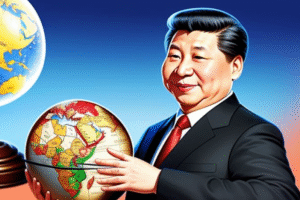$WHEAT $CORN #WheatMarket #Agriculture #CommodityTrading #Farming #MarketTrends #WheatPrices #GrainFutures #FoodSecurity #EconomicTrends #Investing #FuturesMarket
Why Did Wheat Prices Drop This Friday? Discover the Key Factors!
In the latest wheat news, traders are grappling with a notable decline across key wheat markets this Friday. The Chicago Board of Trade (CBT) reported soft red wheat futures trading lower by 7 to 7¼ cents, a development that reflects broader market concerns. Meanwhile, Kansas City hard red winter (HRW) wheat futures have also fallen, showing losses of 7 to 8 cents. The Minneapolis spring wheat futures are not faring much better, dropping back down by 5 to 7 cents.
Understanding the Market Dynamics
Several factors are contributing to the downward trend in wheat prices. First and foremost, global weather patterns are impacting crop yields. Recent reports of unfavorable weather conditions in major wheat-producing regions have raised concerns about future supply. In addition, fluctuations in demand from key importing countries are creating uncertainty in the market. For example, a decrease in demand from countries that typically rely on U.S. wheat can lead to oversupply in domestic markets, subsequently driving prices down.
Moreover, macroeconomic shifts are also playing a significant role. As inflation continues to be a concern worldwide, traders are adjusting their positions in response to changing economic indicators. High interest rates can dampen agricultural investment, leading to decreased demand for futures contracts, which in turn impacts wheat prices negatively.
The Role of Geopolitical Factors
Geopolitical tensions further complicate the wheat landscape. Conflicts in wheat-exporting regions can disrupt supply chains, causing traders to reassess their strategies. For instance, any disturbances in trade routes or sanctions that affect wheat-producing countries can lead to volatility in prices. As history has shown, these geopolitical events can have far-reaching implications for agricultural commodities.
What Lies Ahead for Wheat Traders?
Looking forward, traders should remain vigilant. The interplay between supply chain disruptions, weather conditions, and macroeconomic indicators will continue to shape the wheat market. Those involved in commodity trading need to keep a close eye on news related to crop conditions and global demand trends.
Investors should also consider diversifying their portfolios to mitigate risk. With the current volatility in the wheat market, exploring other agricultural commodities or sectors could provide opportunities for gains.
Final Thoughts on the Wheat Market
In sum, the current situation in the wheat market is a reflection of multiple converging factors. The combination of adverse weather conditions, fluctuating demand, and geopolitical tensions creates a complex environment for traders. As we navigate through these challenges, staying informed will be crucial for making strategic investment decisions. For more insights on stock trading and market trends, be sure to check out our dedicated section on stocks.
By understanding these dynamics, traders can better position themselves to capitalize on opportunities while mitigating potential losses. As we close out the week, the future of wheat prices remains uncertain, but informed decision-making will be key to navigating this evolving landscape.











Comments are closed.